And Why We Need To Give It To Them
Serendipity
Anonymous, -Making Fortunate Discoveries by Accident
What the butterflies want is exactly what we need to give them! To make a butterfly garden is a serendipitous event. By that, I mean that we always get out more than we put in. It’s a garden with a bonus!
Butterflies of the World
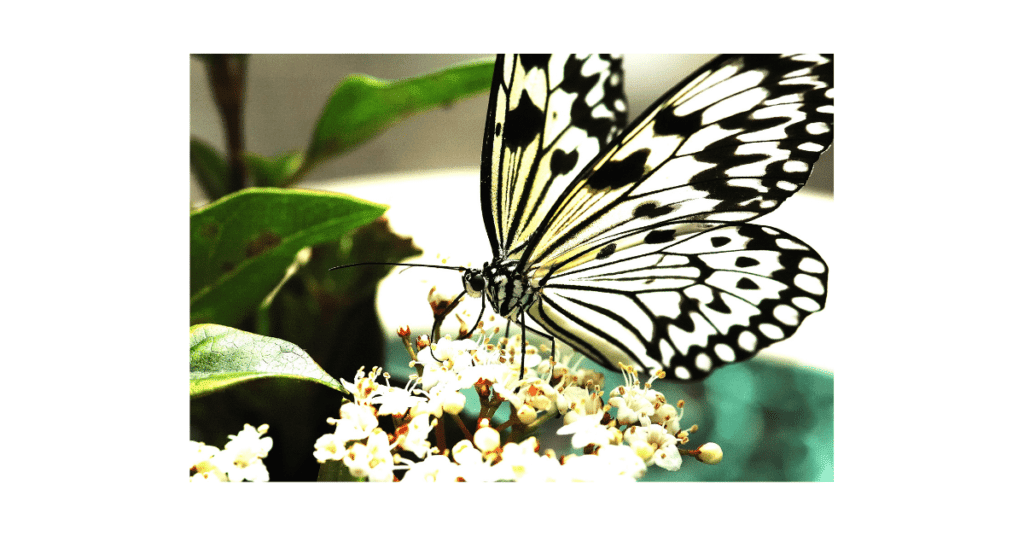
Butterflies have been part of the world for 130 million years. There are about 20,000 species of butterflies in existence today. The US has about 750 species itself. Canada has 302, and Mexico about 1800.
As they are cold-blooded insects, we expect to find butterflies in warm areas. And we do.
However, butterflies also reside in the Arctic, as high as 18,000 feet. Interestingly, while most butterfly life-spans are measured in weeks, the Arctic varieties can live 2 years.
Introduction
Butterflies-Why we value them
Butterflies as Pollinators

Butterflies are pollinators. Have a snack: take 3 bites of food- pollinators produced one of them. Butterflies perform 20% of all pollination. They also help plants reproduce themselves and sustain our ecosystems.
Flagship Species for the Environment
Today scientists understand that butterflies are a flagship species for the health of the entire environment. There is a good example to follow.
Butterflies and the Environment
We love to watch butterflies. They are beautiful, we notice them and remember what they do. These insects are also sensitive to changes in the places where they live.
This has taught scientists to use butterflies to understand problems in local environments. Here is a useful example we have found in South Florida.
The Schauss Swallowtail Butterfly
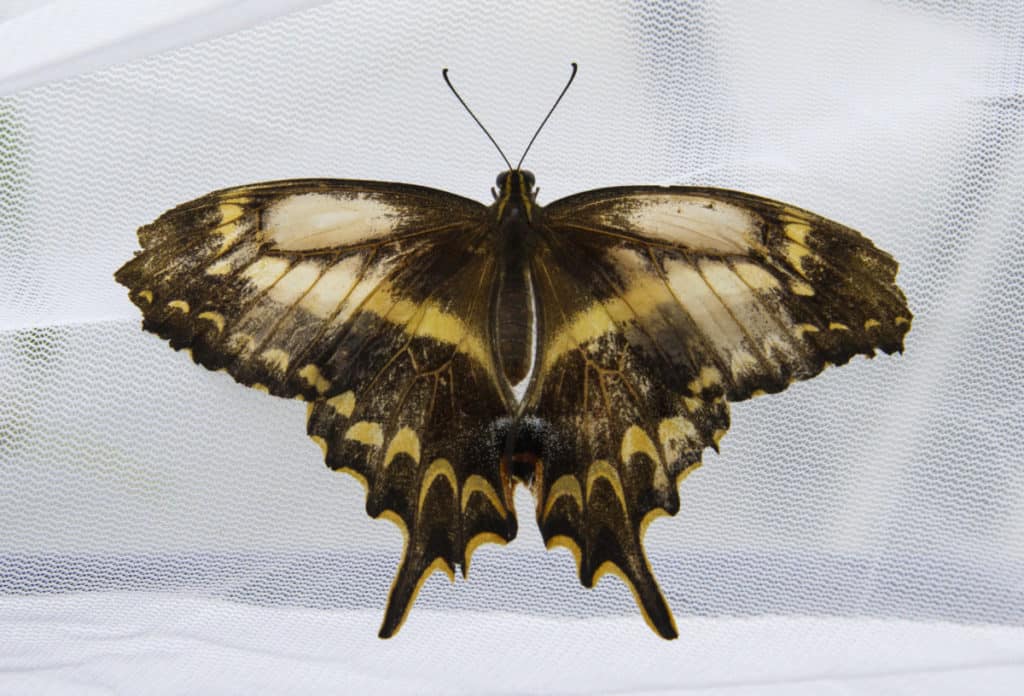
This is the Schauss Swallowtail Butterfly. It is a rare species, historically found in South Miami and a few places in the Florida Keys.
A large brown and yellow butterfly, it has the characteristic long-tailed lower wings of the swallowtail family. It is very noticeable. If you are near one you won’t miss it!
Its Habitat
This butterfly has a specific habitat. It lives only in the, now rare, Florida Tropical Hardwood Hammock. South Florida is so flat that we think of the Hammocks as the mountains of the Everglades.
These hammocks are of just slightly higher elevation than the surrounding area. Hardwood trees within them are of primarily West Indian origin.
People have sheltered within the hammocks for thousands of years. As they rarely burn in the fires common to the Everglades, they provide a very old habitat. Contained inside are 120 plant species of which 36 are endangered or threatened. There are also 9 federally listed animal species.
Today, despite having provided homes for humans for millennia, much of this environment has been lost to destruction for construction or conversion to agriculture. They are also lost to invasive species of both Flora and Fauna and changes in hydrology. Our hurricanes have an impact also.
Status Today
Currently, much of the remaining Hammock territory has been acquired or otherwise protected but much more has been lost with the resulting disappearance of species.
How the Butterflies Helped
This is a dramatic butterfly. It became important to people who know it. Its decline caused interest and concern. We learn from plants and animals which attract us.
Preventing a Public Health Crisis
In 1984 with only 68 butterflies counted, the Schaus Swallowtail entered the endangered species list. Dr Thomas Emmel was a leading researcher at the University of Florida’s McGuire Center for Lepidoptera and Biodiversity. He and his team investigated the causes. (This center has one of the world’s largest butterfly and moth collections.)
They discovered very heavy use of two pesticides in the Monroe County mosquito program. They also discovered in the county the highest rate of neuromuscular disorders and multiple sclerosis in the United States! In the bibliography at the end is a link to this important news story.
The university worked with all 68 mosquito control districts in the state and federal agencies- one of the pesticides was banned and the other restricted.
This all started with 68 little butterflies!
Varieties of Butterflies
The Smithsonian Institute lists US butterflies in 6 families, each with great variety. Some are brilliantly colored. These butterflies don’t need to hide from predators. They are poisonous to eat!
Others, like Skippers are named for their erratic flight. They move high and low. In our backyard, they drove the two Jack Russells frantic!
Most butterflies survive a winter as caterpillars but a few can survive by hibernating. They can build up in their bodies a chemical like antifreeze.
What The Butterflies Want
Wherever they are located, gardens that attract butterflies have four elements. Butterflies may have teeny little brains but they know exactly what they need and they must go where they can find all four things!
Do You Want Butterflies To Stop By Or To Move In?
Butterflies will visit and stay for lunch if you have flowers with nectar, If your garden does not offer all four elements they will be forced to move on and quickly. The four essential elements are:
- Host Plants-these plants attract the female butterfly to lay her eggs. She knows that these plants will feed the caterpillars
- Nectar Plants-these flowering plants have nectar to feed the butterflies
- Shelter-branches, crevices in rocks and trees, places where the butterflies find protection from weather and predators
- Water-most butterflies find enough on the flowers, but some, particularly males, need the salts and minerals found in water puddles
What The Butterflies Want-The Four Examples
Plenty of Nectar Plants
- Nectar Plant
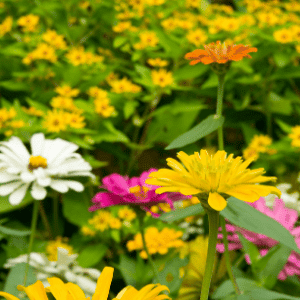
This is the place where you can suit yourself! Follow the rules of groups of three or more and ensure variety and the pollinators will be happy. Don’t plant something you do not love because some expert says you must. It’s still your garden.
For example I break the “red” rule! I plant pinks and purples and the butterflies move in and say “thank you jane”! Or at least I think they do.
How Host Plants Work
- Larval Host plant
This monarch caterpillar is devouring the foliage of this milkweed plant. The monarch female knows that this is all the kids will eat. (It’s a lot like when the kids will only eat peanut butter!) So she needs to find milkweed before she can stay around long enough to lay her eggs. The monarch is migratory and will use the native milkweed plants of many places but it absolutely must be milkweed!
So to attract a butterfly that lives in your region you must offer its chosen host plant.
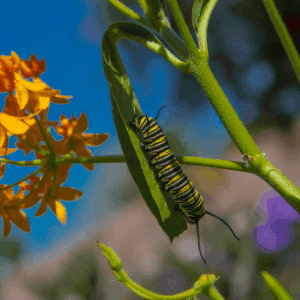
Give Them Some Shelter
- Shelter
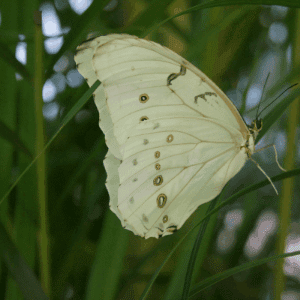
This butterfly has found a safe place within blades of tall grass. Butterflies require shelter from predators and bad weather and will not remain long in places without it.
Butterflies seek out trees, shrubs, grasses, and rocks. They will attatch themselves to the bottoms of leaves and even wedge in the crevaces of tree bark. There are butterflies that can overwinter in the Arctic, it is true that they have short lifespans but they are well adapted to natural events. Just give them a little help and they will pick your garden.
They Will Need A Water Source
- Water
Like any of us living things, the butterflies need water. The females will likely get enough from the flowers. Male butterflies however need the minerals and salts found in groundwater. Try a flat planter tray filled with sand and small stones. Add a bit of water. The butterflies will take what they need and avoid drowning too!
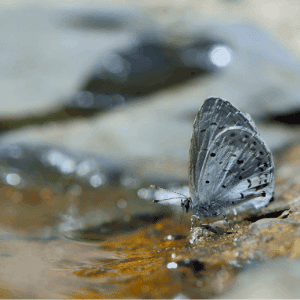
Before You Plant
How The Butterflies Find Your Garden
Before you stick a shovel in the dirt, it is vital to understand how flying butterflies will find your garden. This is the first way in which you can guarantee success.
Butterfly Senses
Butterflies will smell the nectar in your garden, long before they are near enough to see it. How do they do this?
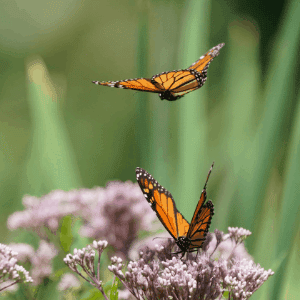
Butterfly Sense of Smell
For butterflies, by far the most important sense is that of smell. They will smell the nectar in your flowers long before they see them. Also they can do this at a distance, using knob shaped sensors on their antennae.
They will again smell the flower as they land on it. This time they use their feet! This tells them if the nectar is safe to drink
Butterfly Eyesight
This is the butterfly’s compound eye, with lots of tiny lenses. This feature allows the butterfly to see in multiple directions and to be extremely sensitive to color. It can also see ultraviolet light radiating from the flower.
It can even see color patterns that indicate the location of the nectar it seeks.
(Thank you to the photographer, Josch13@Pixabay)
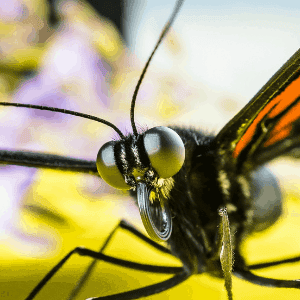
How To Capitalize On The Butterfly Senses
Make sure to plant in masses; plant at least three of each plant together and in the same color. This will ensure that the scent will be strong when the butterfly smells your garden at a distance and that when she (It’s usually the she who arrives first-she lays the eggs.) sees your garden, the color she seeks will be easy to find.
A Butterfly’s Order Of Business
Gathering this information will bring them to visit. They will drink the pollen from your flowers first. If they find Host plants to lay their eggs on-they will stay.
Despite their ephemeral appearance, butterflies are ever pragmatic! They have short lives; they do not economize. Butterflies save nothing for a rainy day. And they only stay at 5-star hotels!
Here are the Elements your Garden will Need
- Variety in the flowers
- Variety in shape and location of the plants
- Native plants wherever possible
Garden Maintenance
In a garden devoted to attracting an insect, we want to avoid insecticides. It is important to practice Integrated Pest Management. This is a system of careful observation and scheduled care. It reduces the need for insecticides and pesticides. I am including a short summary of how IPM works and more resources are listed in the Bibliography at the end.
Butterfly Gardens-Benefits-to the Gardener

- Butterflies are attracted to plants that grow easily in your local area This should reduce your need for additional nutrition and pesticides
- Low maintenance-there are plants good for both sun and shade. Not all butterflies are sun lovers
- This works in spaces small or large. You can have success with butterfly-attracting plants in containers on your patio. Here is information on container-based butterfly gardens
- Your garden can be simple or complex, You can attract butterflies while working with the space you have
- You will be replacing lost pollinator habitat. Your garden can create a safe haven for important elements of the food chain
- Everyone can do it
Are There Any Negatives?
There are two issues to be aware of.
- The butterfly will have no negative effect on the nectar plants. The “Host” plants, however, are called that for a reason. The caterpillars will eat them. They are eating machines. For the several weeks of their existence, the caterpillar lives to eat. Some varieties can eat 27,000 times their weight in the foliage!
- This means that the host plants get pretty ragged-looking. You can hide them behind flowering plants. We like to keep host plants in pots wherever possible. This way it is easy to remove the chewed host plant to areas with few butterflies so that the plants can recover. We find that it is possible to recycle plants many times.
Avoiding insecticides requires extra planning. You will learn to be very aware of the health of your plants. Inspect them for pests and damage on a regular basis. Successful butterfly gardeners are observant gardeners.
- Learn to use IPM: Integrated Pest Management
Integrated Pest Management-What you Need to Know
IPM is an ecological approach to controlling garden pests. It is an important tool for any gardener. Because butterflies are insects, this becomes particularly important to us in our butterfly gardens. IPM positions tools, called Control Methods, in four categories and they are used in this order.
- Cultural– Begin with observation, view the garden every day if you can. Take your morning coffee and just look for early signs of trouble. Remove any plant debris, pinch off damaged leaves. Test your soil for nutritional deficiencies. Select seeds which are pest-resistant varieties. Follow plant spacing advice. Practice right-plant, right-place, water management, and care in pruning.
- Mechanical-Remove pests as you spot them. Water pressure can be effective for pests, remove affected leaves and dispose of them.
- Biological-Use beneficial predators. Ladybugs will eat aphids without the need for chemicals. (They will also eat your current crop of butterfly eggs.) Include plants that discourage pests. Mint, Rosemary, and Lemongrass will fend off mosquitoes. Marigolds repel aphids.
- Chemical-As this is the last resort, follow these steps. If you are not controlling the predators, ensure that you have correctly identified the predator. Then apply the most selective product first. Use your county Extension Service. We are Master Gardeners in our county. Our service offers plant clinics at various locations in public libraries, garden centers, and at our office. You can bring in your samples and photographs and we will use our university-based resources to help.
If you would like to try to attract birds to your garden try this idea.
Summary,
It is rare that the average person has the opportunity to provide wildlife habitat on the patio, the balcony, or the backyard. Pollinators are unique among wildlife in requiring little space. Small butterfly gardens are a daily pleasure and a chance not to be missed. Try it!
Have you tried butterfly gardening? How is it going for you?
Bibliography
General Information
https://observer.com/2016/03/how-saving-an-endangered-butterfly-helped-avert-a-health-crisis/How Saving an Endangered Butterfly Helped Avert a Health Crisis
Why Butterflies Matter-Conservation UK
Basics of Butterfly Gardening, North American Butterfly Association
Rosy Tomorrows Heritage Farm is not a butterfly farm, but an organic farm and restaurant whose environment is favorable to butterflies.
‘The Monarch Butterfly Migration: the Survival of a Species”-how the butterflies do it and how to watch them do it!
